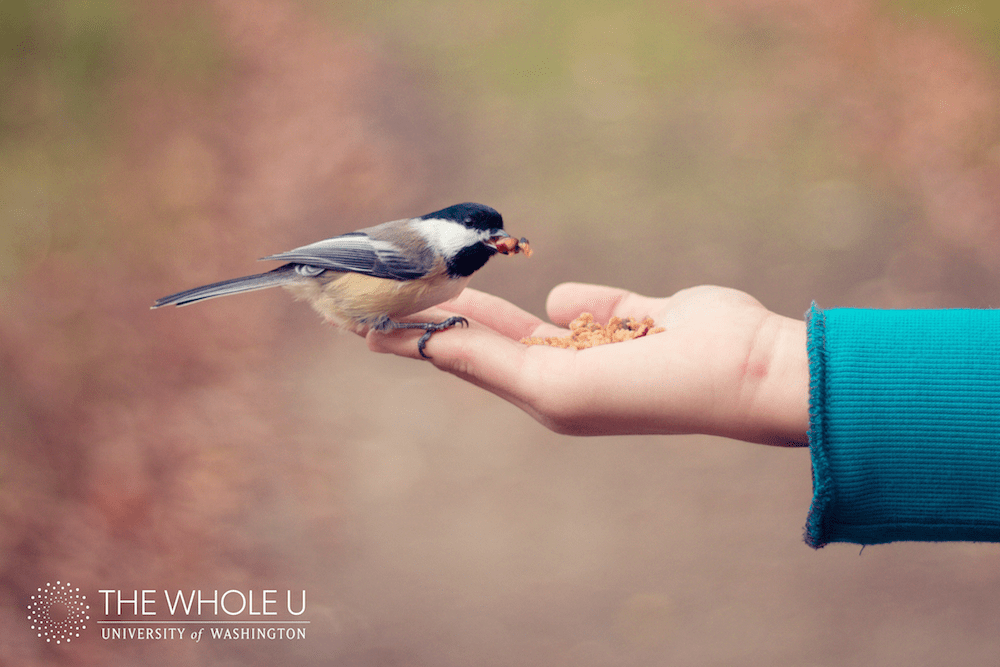
How to Watch and Feed Birds this Winter
From all the 500 bird species in Washington, how many do you think you can spot? Winter is not just a cold and difficult time for people. Birds also endure winter hardships, struggling to find food during this scarce season. That is why February is the month dedicated to bird feeding and -watching.
More than a third of the U.S. adult population feeds wild birds in their backyards. But many are still unaware of some important safety factors for feeding and watching these spectacular specimens. How and what can we feed birds without being intrusive or harmful? What should we keep in mind when engaging in bird watching as a hobby? For an expert’s insight, we asked John M. Marzluff, professor at the School of Environmental and Forest Sciences, to answer these questions and many more.
When is the Best Time to Bird-Watch
Finding the best times for birding is difficult because there are so many geographic, climate, and other external factors that play into a bird’s activity throughout the day. However, there are a couple general suggestions for bird watching based on the most common occurrences of bird activity.
Early mornings make for the best time to watch birds eat. Birds spend majority of the day foraging by finding food to feed themselves, their mates, or their hatchlings. Early morning is prime time for feeding due to the sun rising—the warmth makes insects more prone to come out, making it easier for insectivorous birds to hunt. Birds are also known to store energy for the night. Therefore, late evenings are another popular time for birds to forage and eat.
Marzluff advises would-be bird watchers to use binoculars and stay quiet and still.
“Bird watchers move slow and often stop and let their disturbance to an area subside and let birds return to their normal activities so we can watch them,” he says.
Mazluff recommends getting a bird guide—either in print or an app—to make informed observations. “I use Sibly’s guide in paper and the Audubon bird app. I discuss common birds around our homes in my book,Welcome to Subirdia, You can also join the Seattle Audubon Society to learn more about birds.”
In some cases, using your ears rather than your eyes to find these lovely creatures is the best and most rewarding approach. It is important to note that spring and summer seasons are the golden time for mating and establishing territories, so there will be more to listen to. Primarily, birds will sing in the early morning, so maybe consider turning into an early bird yourself to catch those beautiful tunes.
Types of Birds Around Campus
At UW, there are many birds to look out for around campus, Marzluff says. He advises bird enthusiasts to look for:
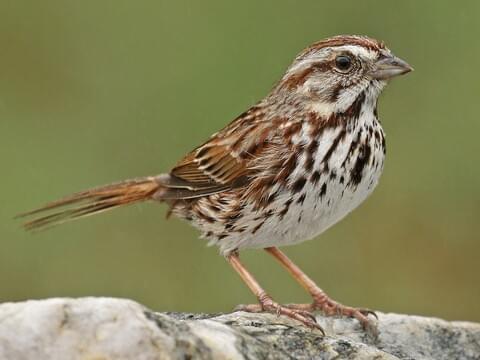 Song sparrow
Song sparrow
These birds use their songs to both attract mates and defend their territory.
Listen for the tunes these tiny birds make around campus!
Spotted towhee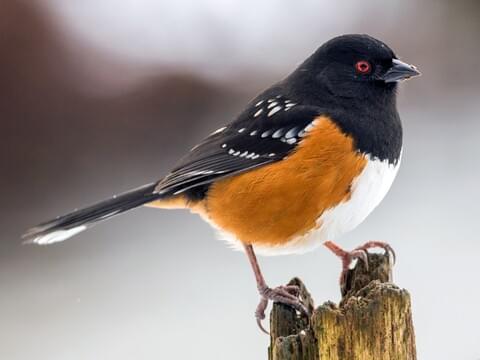
These birds can be spotted around thick shrubs and dry thickets.
They also like to hop around wherever they go to spot food easily and rest when needed.
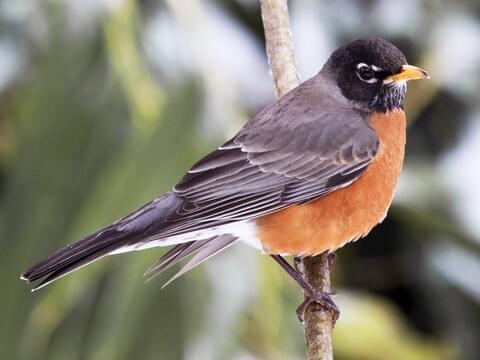 American robin
American robin
These birds are usually the last birds singing as the sun sets. The male and female American robins can be distinguished by the color of their feathers. The male robins are much more colorful and brighter than their female counterparts.
 Winter varied thrush
Winter varied thrush
These birds can be found in dark, wet forests. In addition, males tend to defend bird feeds during the winter time, while females are less confrontational and will find alternative bird feeding sites.
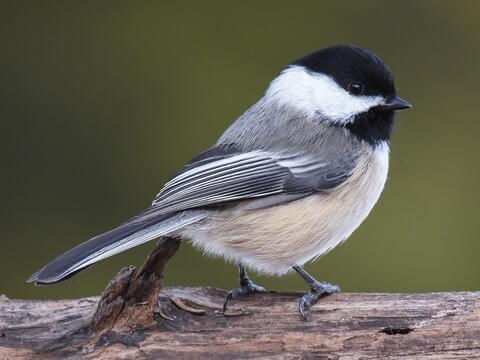 Chickadees (chestnut-backed and black-capped)
Chickadees (chestnut-backed and black-capped)
These birds travel in flocks called a banditry of chickadees. They also have a hierarchy of dominance within the flock which determines which bird can eat out of the bird feed first and which bird has the safest spot away from predators.
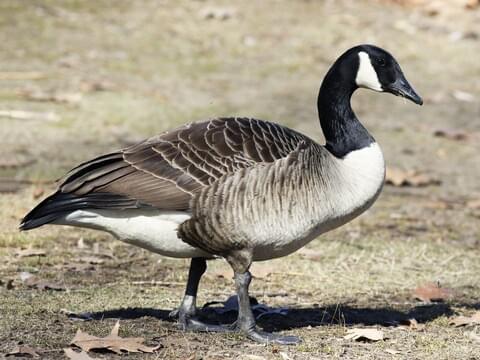 Geese
Geese
These birds always fly in a V formation, making it easy to spot from a distance around campus. There are way more types of geese than one expects. “This time of year you might see a white-fronted, snow, or cackling goose in addition to the standard Canada goose.” Marzluff says.
What to Know about Bird-Feeding
Although bird feeding provides birds with food, water, and shelter, there precautions Marzluff recommends we, as bird feeders, take.
Tip #1: “Use a bird feeder that keeps food out of rain so it will not mold. If feeding hummingbirds, make sure to clean feeder every week or two when you refill it so mold is removed.”
Tip #2: “Try to put out just enough food in seed feeders so that it is consumed each day—this reduces other animals, rats and raccoons, from eating it at night and also keeps the feed fresh.”
Tip #3: “Generally, black oil sunflower is a great every day food for most birds.”
Tip #4: “For finches, you should use thistle or shelled sunflower pieces. Finches often get conjunctivitis or pox, so it is a good idea to remove food for a few days every few weeks to reduce overcrowding and stop spread of these diseases.”
Tip #5: “Once a month or so wash feeders with bleach to remove disease.”
Types of Food to Feed Birds
Even though the spring season follows quickly after winter, many birds lack access to a food source when flying from one destination to another. By setting up a small bird feeder in your backyard, you can make the difference between life and death for these birds.
During the colder months, birds need fattier food in their diet to provide ample energy for survival. According to Spruce, there are seven best bird foods to feed for the winter season.
-
- These seeds have thinner shells and higher oil content compared to striped sunflower seeds, making it easier to eat and more nutritious for birds
-
- Although small birds such as hummingbirds do not eat peanuts, other birds love this quick snack because of its excellent source of calories and energy
-
- This seed is commercially grown in Africa, but it is shipped all over the world because birds love it for its high protein
-
- Suets come in all shapes—balls, plugs, cakes, pellets, crumbles—and flavors—fruit, insect, seeds, nuts, peppers. These are a popular food for backyard birds.
-
- Peanut butter is preferred by smaller birds that can hold this in their small bills, but larger species may give this treat a try as well!
-
- The small starchy grain is packed with protein, fiber, and fat, making it an easy feed to set up and share with your bird friends
- Fruits
- Fruits are always a safe option for birds because it is naturally in most bird’s regular diet
Bird feeding and watching can be one of the most rewarding and enjoyable ways to relax while still engaging body and mind. Now that you have the know-how to do so, share your favorite bird-feeding stories in the comments!
3 Thoughts on “How to Watch and Feed Birds this Winter”
On February 25, 2020 at 8:23 AM, Charles Easterberg said:
Excellent article, John! I run wo squirrel-proof feeders in my back yard and besides goldfinch, siskins, both chickadees and juncoes, have a couple of song sparrows and towees. There is also a surprise, a slate-colored junco like I used to see in Illinois, slate-gray from stem to stern.
On February 25, 2020 at 2:15 PM, Deb Hemingway said:
Nice, succinct article. It would have also been helpful to mention some resources for plantings that can most benefit birds in the winter. That food (and shelter) source gets around the concerns of constantly cleaning and supplying feeders.
On February 25, 2020 at 6:16 PM, Teresa Jewell said:
Several species of ducks make use of Drumheller Fountain. I check who’s in there whenever I go by.
Comments are closed.